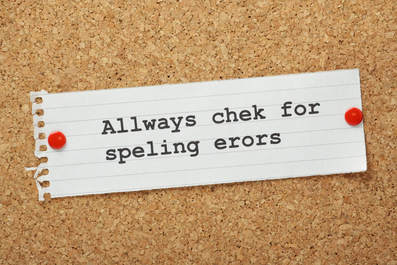How To Write A Book (or Ebook) - Part 1
 Getting Started
-
The experience of creating an eBook should be fun but like all worthwhile endeavors, a special part of you must be devoted to the task. In other words, take your writing seriously. Set aside some time, which is exclusive to this mission you have of telling your story. It doesn’t have to require a strict 7pm – 10pm schedule, but you should be willing to dedicate a healthy amount of time to the job of fulfilling this dream of yours.
Getting Started
-
The experience of creating an eBook should be fun but like all worthwhile endeavors, a special part of you must be devoted to the task. In other words, take your writing seriously. Set aside some time, which is exclusive to this mission you have of telling your story. It doesn’t have to require a strict 7pm – 10pm schedule, but you should be willing to dedicate a healthy amount of time to the job of fulfilling this dream of yours.
 Write down ALL of your ideas - The many thoughts that you have are building blocks towards the final product. Do not sort these things out in your head. Put them down on paper (or the computer). After writing this out, you can now go about sorting out what it is that you are really trying to say.
Write down ALL of your ideas - The many thoughts that you have are building blocks towards the final product. Do not sort these things out in your head. Put them down on paper (or the computer). After writing this out, you can now go about sorting out what it is that you are really trying to say.Central Theme - Make a decision about the subject that you wish to write about. What you are sharing with others might cover many different ideas, but there should always be one central theme, which ties them together. You can't take a real first step unless you have a direction. Outline - You should then draw up an outline. This will make it clearer to view the overall picture, which will eventually become your book. The rule should be the following:
Focus on a main character (or event) and build on who or what they are about (goals).Name what the problem or obstruction is that prevents the main character from accomplishing these goals.Explain how the main character attempts to work through these issues.And finally, explain if the main character resolves the situation and how the story ends.
There is no expectation that you should have all the finished components when you begin. Being able to clearly complete the above chart will eventually make it easier for you expand on your story.
 Building on characters & plots - You can have subplots and extra characters but just don’t get lost by following too many roads. The reader will eventually want to know what happens to the main character that you stated was so important in the beginning of your tale and the important decisions that they are making, so don’t begin a premise that you cannot finish.
Building on characters & plots - You can have subplots and extra characters but just don’t get lost by following too many roads. The reader will eventually want to know what happens to the main character that you stated was so important in the beginning of your tale and the important decisions that they are making, so don’t begin a premise that you cannot finish.Tying loose ends - Be careful to tie up all loose ends and unresolved issues. There is nothing more confusing to the reader than to really be interested in your journey and then find that you have left them with many unanswered questions.
 Grammatical errors - When you have completed your masterpiece, go through it for grammatical errors and content at least twice. Use the grammar and spellcheck on your computer. Have a few other people read your book in order to get their opinions and yes, their criticisms. Make whatever adjustments you deem necessary and then read your book one more time. After all of this, you will be more prepared for the really fun part, which is putting your story out there so the world can appreciate it. Next week - How To Write A Book (or eBook) - Part 2
Grammatical errors - When you have completed your masterpiece, go through it for grammatical errors and content at least twice. Use the grammar and spellcheck on your computer. Have a few other people read your book in order to get their opinions and yes, their criticisms. Make whatever adjustments you deem necessary and then read your book one more time. After all of this, you will be more prepared for the really fun part, which is putting your story out there so the world can appreciate it. Next week - How To Write A Book (or eBook) - Part 2(Websites, Self-Publishing, Independent Publishing, Traditional Publishing)
Published on January 12, 2018 17:07
No comments have been added yet.



